
 Locksley Resources (LKY:AU) has announced High Grade Mineralised Corridor at the Mojave Project
Locksley Resources (LKY:AU) has announced High Grade Mineralised Corridor at the Mojave Project
Download the PDF here.

 Locksley Resources (LKY:AU) has announced High Grade Mineralised Corridor at the Mojave Project
Locksley Resources (LKY:AU) has announced High Grade Mineralised Corridor at the Mojave Project
Download the PDF here.


HIGHLIGHTS
– Results from rock chip sampling returns 409g/t Ag confirming high-grade silver mineralisation ~3km from the initial high-grade silver discovery (Sample 258140), 320m southwest of the Desert Antimony Mine (DAM)
– Significant base metal mineralisation confirmed in addition to silver, with samples returning grades up to 4.2% Copper (Cu), 1.5% Lead (Pb), and 1.5% Zinc (Zn), highlighting the polymetallic nature of the system
– Twelve (12) rock chip samples exceeded 30g/t Ag, reinforcing additional precious and base metal potential within the Mojave Project’s North Block
– This discovery represents an important advancement in the Company’s exploration strategy and identifies a new, potentially high-value component of the Mojave Project
This discovery represents an important advancement in the Company’s exploration strategy and identifies a new, potentially high-value component of the Mojave Project. The delineation of a mineralised corridor suggests a strike extent approximately 2.4km westnorthwest of the Hendricks Shaft, and approximately 600m to the east-southeast, extending the mineralised corridor almost 3km from the Silver Prospect. This confirms the presence of a polymetallic quartz vein system, which includes the high-grade sample 258140 collected from a 3cm to 10cm wide vein (Figure 1*). These early results possibly suggest that the Ag-Pb-Zn-Cu mineralisation may reflect the presence of a large-scale hydrothermal system, which could potentially contain valuable concentrations of precious and base metals. Further exploration is required to test this concept.
Rock chip sampling within the Mojave Project’s North Block has returned results of up to 409g/t Ag, with associated base metal values of up to 1.5% Zn and 0.88% Pb, supporting the interpretation of a polymetallic mineralised system and enhancing the prospectivity of the corridor. Additional rock chip sample 258420 returned values up to 117g/t Ag, & 3.1% Cu, also located within the interpreted mineralised corridor located close to a historic adit and workings.
The interpreted mineralised corridor includes the historic Hendricks Shaft, located approximately 2.4km from the initial high-grade silver discovery. A total of 398 rock chip samples have been collected across the North Block with ~260 of these being collected along the mineralised corridor between DAM and up to 5.6km to the southeast.
Rock Chip Sampling Program Details
The recent sampling campaign was designed to test the strike extent of the high-grade silver mineralisation first identified in late 2024. The results (see Table 1) have exceededexpectations, confirming that the mineralised system extends significantly beyond the initial discovery zone (Sample 258140 – Figure 1*).
Key observations from the program include:
– Strike Extension: The mineralised corridor is now interpreted to extend from the Silver Prospect (Sample 258140) to historical trenches and stockpiles (Samples 258184 & 258185) located ~3km to the south-east significantly increasing the strike extent of the exploration target.
– Mineralisation Style: High-grade samples 258184 and 258185, collected from outcropping veins and historic stockpiles, exhibit quartz with gossanous selvages with boxwork textures. These are potential indicators of weathered sulphide-rich polymetallic veins, suggesting fresh sulphides may exist at depth.
– Visual Copper: Sample 258420 (which returned 117g/t Ag & 3.1% Cu) was collected from outcropping mineralisation at historic workings where copper carbonate (i.e. malachite) is visually prevalent (see Figure 3*). This confirms a copper component to the mineralised system.
Next Steps
Locksley will advance this exciting silver and base metal opportunity through a systematic exploration program run in parallel with ongoing activities at DAM and El Campo, comprising:
– Systematic Mapping: Detailed geological mapping between the Silver Prospect and the new south-eastern extension to define the structural geometry and continuity of the trend.
– Petrology and Geochemistry: Submission of samples for petrological interpretation to assist with determining relative timing of mineralisation and geochemical associations across the system.
– Geophysics: Assessment of geophysical survey options, such as Very Low Frequency electromagnetics (VLF-EM), Induced Polarisation (IP), or Electromagnetic (e.g. VTEM) to potentially identify mineralised zones and structures at depth that are not visible at surface.
– Drill Targeting: The goal of this work is to delineate high-priority drill-ready targets along the NW-SE corridor for future testing.
Additional work is planned to improve understanding of the corridor’s structural geometry, enabling more effective drill targeting and delineation of the extent and grade of mineralisation within the North Block.
Kerrie Matthews, Managing Director & CEO, commented:
‘Defining a 3km mineralised trend with surface results of up to 409 g/t silver and 1.5% copper is a highly encouraging outcome. Importantly, this discovery complements our core antimony development strategy and gives exposure as a diversified U.S. critical minerals company, providing shareholders with upside to precious metals, base metals, and strategic minerals within a single, high-quality project area.’
*To view tables and figures, please visit:
https://abnnewswire.net/lnk/R8C037M3
About Locksley Resources Limited:
Locksley Resources Limited (ASX:LKY,OTC:LKYRF) (FRA:X5L) (OTCMKTS:LKYRF) is an ASX listed explorer focused on critical minerals in the United States of America. The Company is actively advancing exploration across two key assets: the Mojave Project in California, targeting rare earth elements (REEs) and antimony. Locksley Resources aims to generate shareholder value through strategic exploration, discovery and development in this highly prospective mineral region.
Mojave Project
Located in the Mojave Desert, California, the Mojave Project comprises over 250 claims across two contiguous prospect areas, namely, the North Block/Northeast Block and the El Campo Prospect. The North Block directly abuts claims held by MP Materials, while El Campo lies along strike of the Mountain Pass Mine and is enveloped by MP Materials’ claims, highlighting the strong geological continuity and exploration potential of the project area.
In addition to rare earths, the Mojave Project hosts the historic ‘Desert Antimony Mine’, which last operated in 1937. Despite the United States currently having no domestic antimony production, demand for the metal remains high due to its essential role in defense systems, semiconductors, and metal alloys. With significant surface sample results, the Desert Mine prospect represents one of the highest-grade known antimony occurrences in the U.S.
Locksley’s North American position is further strengthened by rising geopolitical urgency to diversify supply chains away from China, the global leader in both REE & antimony production. With its maiden drilling program planned, the Mojave Project is uniquely positioned to align with U.S. strategic objectives around critical mineral independence and economic security.
Tottenham Project
Locksley’s Australian portfolio comprises the advanced Tottenham Copper-Gold Project in New South Wales, focused on VMS-style mineralisation
Source:
Locksley Resources Limited
Contact:
Kerrie Matthews
Chief Executive Officer
Locksley Resources Limited
T: +61 8 9481 0389
Kerrie@locksleyresources.com.au
News Provided by ABN Newswire via QuoteMedia


Nine Mile Metals Ltd. (CSE: NINE,OTC:VMSXF) (OTC Pink: VMSXF) (FSE: KQ9) (‘Nine Mile’ or the ‘Company’) is pleased to announce a private placement of up to 21,052,632 units (the ‘Units’) at a price of $0.19 per Unit for aggregate gross proceeds of up to $4,000,000 (the ‘Offering’).
Each Unit is comprised of one (1) common share of the Company (a ‘Common Share‘) and one (1) common share purchase warrant of the Company (a ‘Warrant‘), with each Warrant exercisable into one (1) Common Share at a price of $0.30 for a period of two (2) years, subject to the acceleration provision disclosed herein.
Subject to compliance with applicable regulatory requirements and in accordance with National Instrument 45- 106 – Prospectus Exemptions (‘NI 45-106‘), the Units will be offered for sale to purchasers resident in all provinces of Canada, other than Quebec, and/or other qualifying jurisdictions pursuant to the listed issuer financing exemption under Part 5A of NI 45-106, as amended by Coordinated Blanket Order 45-935 – Exemptions from Certain Conditions of the Listed Issuer Financing Exemption (the ‘Listed Issuer Financing Exemption‘). The Units issued to Canadian resident subscribers under the Listed Issuer Financing Exemption, and the Common Shares and Warrants underlying the Units, will not be subject to a hold period pursuant to applicable Canadian securities laws.
The Offering is expected to close on or about January 13, 2026 (the ‘Closing Date‘), or such other date as the Company may determine, and is subject to certain conditions including, but not limited to, the receipt of all necessary regulatory and other approvals.
The Company may pay finder’s fees in connection with the Offering comprised of cash equal to 8% of the gross proceeds of the Offering and finder warrants (the ‘Finders Warrants‘) equal to 8% of the number of Units issued under the Offering. Each Finders Warrant will be exercisable for one (1) additional Unit at a price of $0.19 for a period of two (2) years. Each Unit is comprised of one (1) Common Share and one (1) Warrant. Each Warrant entitles the holder thereof to acquire one (1) Common Share at a price of $0.30 for a period of two (2) years. The Finders Warrants will be subject to a statutory hold period in Canada of four (4) months and one (1) day after the date of issuance.
Following the Closing Date, if the daily volume-weighted average trading price of the Common Shares on the CSE equals or exceeds $0.50 at the close of any trading day for ten (10) consecutive trading days, the Company may, at its discretion, accelerate the expiry date of the Warrants by providing not less than thirty (30) days’ notice to Warrant holders via press release.
The Company intends to use the proceeds of the Offering for (i) exploration activities and related expenses on its critical minerals projects in the Bathurst Mining Camp; and (ii) general and administrative obligations.
There is an offering document (the ‘Offering Document‘) related to the Offering and the use by the Company of the Listed Issuer Financing Exemption that can be accessed under the Company’s profile on SEDAR+ at www.sedarplus.ca and on the Company’s website at https://ninemilemetals.com/. Prospective investors should read this Offering Document before making an investment decision.
This news release does not constitute an offer to sell or a solicitation of an offer to buy any securities in the United States. The securities have not been and will not be registered under the United States Securities Act of 1933, as amended (the ‘U.S. Securities Act‘) or any state securities laws and may not be offered or sold within the United States or to U.S. Persons unless registered under the U.S. Securities Act and applicable state securities laws or an exemption from such registration is available.
About Nine Mile
Nine Mile Metals Ltd. is a Canadian public mineral exploration company focused on VMS (Cu, Pb, Zn, Ag and Au) exploration in the world-famous Bathurst Mining Camp, New Brunswick, Canada. The Company’s primary business objective is to explore its four VMS Projects: Nine Mile Brook VMS Project; California Lake VMS Project; and the Canoe Landing Lake (East – West) Project and the Wedge VMS Project. The Company is focused on exploration of Minerals for Technology (MFT), positioning for the boom in EV and green technologies requiring Copper, Silver, Lead and Zinc with a hedge with Gold.
ON BEHALF OF Nine Mile Metals LTD.,
‘Patrick J. Cruickshank, MBA‘
CEO and Director
T: 506-804-6117
E: patrick@ninemilemetals.com
Cautionary Statement Regarding Forward-Looking Information
This news release contains certain ‘forward-looking information’ within the meaning of Canadian securities legislation, including, but not limited to, statements regarding the Company’s plans with respect to the Company’s projects and the timing related thereto, the merits of the Company’s projects, the Company’s objectives, plans and strategies, the Offering, the listing of the Common Shares on the CSE, the use of proceeds of the Offering and other matters. Although the Company believes that such statements are reasonable, it can give no assurance that such expectations will prove to be correct. Forward-looking statements are statements that are not historical facts; they are generally, but not always, identified by the words ‘expects,’ ‘plans,’ ‘anticipates,’ ‘believes,’ ‘intends,’ ‘estimates,’ ‘projects,’ ‘aims,’ ‘potential,’ ‘goal,’ ‘objective,’, ‘strategy’, ‘prospective,’ and similar expressions, or that events or conditions ‘will,’ ‘would,’ ‘may,’ ‘can,’ ‘could’ or ‘should’ occur, or are those statements, which, by their nature, refer to future events. The Company cautions that forward-looking statements are based on the beliefs, estimates and opinions of the Company’s management on the date the statements are made and they involve a number of risks and uncertainties. Consequently, there can be no assurances that such statements will prove to be accurate and actual results and future events could differ materially from those anticipated in such statements. Except to the extent required by applicable securities laws and the policies of the CSE, the Company undertakes no obligation to update these forward-looking statements if management’s beliefs, estimates or opinions, or other factors, should change. Factors that could cause future results to differ materially from those anticipated in these forward-looking statements include the risk of accidents and other risks associated with mineral exploration operations, the risk that the Company will encounter unanticipated geological factors, or the possibility that the Company may not be able to secure permitting and other agency or governmental clearances, necessary to carry out the Company’s exploration plans, risks of political uncertainties and regulatory or legal changes in the jurisdictions where the Company carries on its business that might interfere with the Company’s business and prospects. The reader is urged to refer to the Company’s reports, publicly available through the Canadian Securities Administrators’ System for Electronic Data Analysis and Retrieval + (SEDAR+) at www.sedarplus.ca for a more complete discussion of such risk factors and their potential effects.
The Canadian Securities Exchange has not reviewed and does not accept responsibility for the adequacy or the accuracy of the contents of this release.
Not for distribution to United States newswire services or for dissemination in the United States

To view the source version of this press release, please visit https://www.newsfilecorp.com/release/279514

News Provided by Newsfile via QuoteMedia


Osisko Metals Incorporated (the ‘Company’ or ‘Osisko Metals’) (TSX: OM,OTC:OMZNF; OTCQX: OMZNF; FRANKFURT: 0B51) is pleased to announce the appointment of Jeff Hussey, P.Geo., as Chief Operating Officer of the Company effective immediately.
Mr. Hussey, P.Geo., has over 40 years of professional experience in the exploration and mining industries. He has worked in both open pit and underground operations at various stages of mine life, from start-up to mine closure. Mr. Hussey has a Bachelor of Science in Geology from the University of New Brunswick.
Jeff has been a director of the Company since 2017 and has held various management positions with Osisko Metals, most recently as CEO of the Company’s subsidiary Pine Point Mining Limited. Jeff has resigned as a member of Osisko Metals’ board of directors and will continue to support Pine Point Mining Limited, in addition to his role as COO of the Company, focusing on all technical aspects of developing the design concept for the Gaspé Copper project during the economic evaluation, permitting, and startup phases.
Robert Wares, Chief Executive Officer of Osisko Metals, stated: ‘We are pleased to have Jeff rejoin the management team as the Company advances its flagship Gaspé Copper Project.’
About Osisko Metals
Osisko Metals Incorporated is a Canadian exploration and development company creating value in the critical metals sector, with a focus on copper and zinc. The Company acquired a 100% interest in the past-producing Gaspé Copper mine from Glencore Canada Corporation in July 2023. The Gaspé Copper mine is located near Murdochville in Québec‘s Gaspé Peninsula. The Company is currently focused on resource expansion of the Gaspé Copper system, with current Indicated Mineral Resources of 824 Mt averaging 0.34% CuEq and Inferred Mineral Resources of 670 Mt averaging 0.38% CuEq (in compliance with NI 43-101). For more information, see Osisko Metals’ November 14, 2024 news release entitled ‘Osisko Metals Announces Significant Increase in Mineral Resource at Gaspé Copper’. Gaspé Copper hosts the largest undeveloped copper resource in eastern North America, strategically located near existing infrastructure in the mining-friendly province of Québec.
In addition to the Gaspé Copper project, the Company is working with Appian Capital Advisory LLP through the Pine Point Mining Limited joint venture to advance one of Canada‘s largest past-producing zinc mining camps, the Pine Point project, located in the Northwest Territories. The current mineral resource estimate for the Pine Point project consists of Indicated Mineral Resources of 49.5 Mt averaging 5.52% ZnEq and Inferred Mineral Resources of 8.3 Mt averaging 5.64% ZnEq (in compliance with NI 43-101). For more information, see Osisko Metals‘ June 25, 2024, news release entitled ‘Osisko Metals releases Pine Point mineral resource estimate: 49.5 million tonnes of indicated resources at 5.52% ZnEq’. The Pine Point project is located on the south shore of Great Slave Lake, NWT, close to infrastructure, with paved road access, an electrical substation and 100 kilometres of viable haul roads.
For further information on this news release, visit www.osiskometals.com or contact:
Don Njegovan, President
Email: info@osiskometals.com
Phone: 416-500-4129


News Provided by GlobeNewswire via QuoteMedia
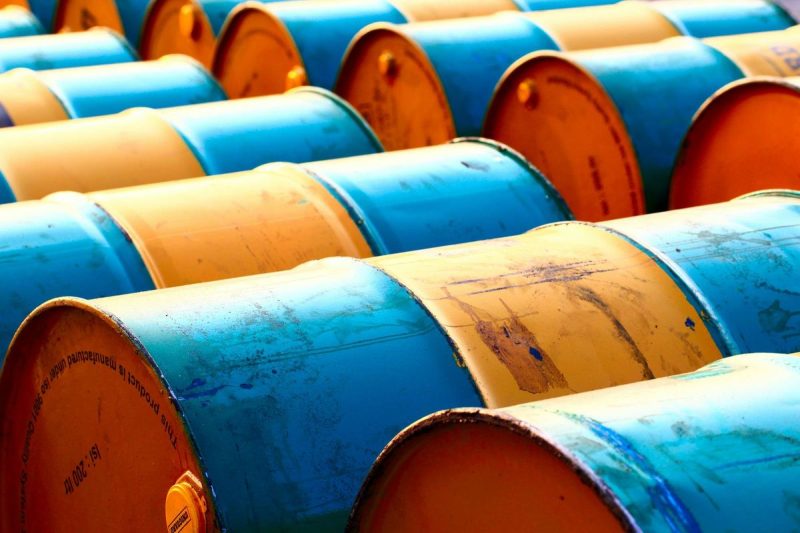

Oil prices moved uneasily at the start of the week as markets digested the implications of a sudden US intervention in Venezuela.
Brent crude slipped as much as 1.2 percent in early trading to around US$60 a barrel before recovering modestly to trade just above US$61.
The US over the weekend removed Venezuelan President Nicolás Maduro from power, with President Donald Trump saying Washington would assume control over the country’s oil sector and invite US companies to invest in rebuilding it.
Venezuela holds about 303 billion barrels of proven crude reserves—roughly 17 percent of the global total, according to the US Energy Information Administration—but currently produces only about 1 million barrels per day, less than 1 percent of global supply.
That gap between geological potential and actual output explains why traders have so far resisted pricing in a near-term supply shock or surge. Venezuela’s exports are already constrained by US sanctions and a naval blockade, and analysts say it would take years and tens of billions of dollars to restore production to anything close to historical levels.
“People are going to assume there’s going to be a lot more oil in the medium term,” Amrita Sen, founder of consultancy Energy Aspects, told the Financial Times.
Sen also noted that the prevailing market instinct is to treat US involvement as eventually bearish for prices, but added that nothing has materially changed in the short term.
Indeed, the broader oil market is already weighed down by oversupply concerns. Brent prices fell roughly 20 percent in 2025, sliding from above US$70 to just over US$60 as rising production collided with softer demand growth.
Non-OPEC producers, led by record US output, have added barrels, while OPEC+ has struggled to balance defending prices with regaining market share.
At a scheduled meeting on Sunday (January 4), eight OPEC+ members signaled no immediate change in strategy and agreed to maintain a pause on production increases until at least April.
The decision reinforced the view that the cartel is cautious about adding more supply into an already heavy market.
In the near term, Venezuela’s own output could even decline. The blockade has restricted imports of diluents needed to blend the country’s heavy crude for export, tightening operational constraints. Reuters reported that state-owned oil company Petróleos de Venezuela has asked some joint-venture partners to scale back production.
Against that backdrop, the political drama in Caracas has landed at an awkward moment for oil markets heading into 2026.
Market volatility was a defining feature of 2025. Brent crude traded between a high of US$81.86 and a low near US$59.41, while WTI ranged from US$78.99 to about US$55.56.
Cunningham also pointed to President Trump’s shifting tariff policies as a source of uncertainty. “We can see that Trump’s ‘Liberation Day’ tariffs pushed prices down to a level from which they’ve not recovered from,” he said, aside from a brief spike during last year’s Iran-Israel conflict.
Yet not all analysts share the deeply bearish view. Josef Schachter of the Schachter Energy Report argued that perceptions of abundant supply obscure tighter underlying fundamentals.
Global floating inventories hover near a billion barrels, much of it tied up in “shadow fleets” off Iran, Russia, and Venezuela, awaiting demand.
“Even though people are talking about lots of supply, demand is still growing,” he said, estimating global oil demand rose about 1.3 million barrels per day in 2025 and could increase by roughly 1.2 million barrels per day in 2026.
For oil markets, however, Venezuela remains more a symbol than an immediate supply lever. For now, the muted reaction appears to signal a consensus that even dramatic political change does not alter the near-term balance.
Securities Disclosure: I, Giann Liguid, hold no direct investment interest in any company mentioned in this article.

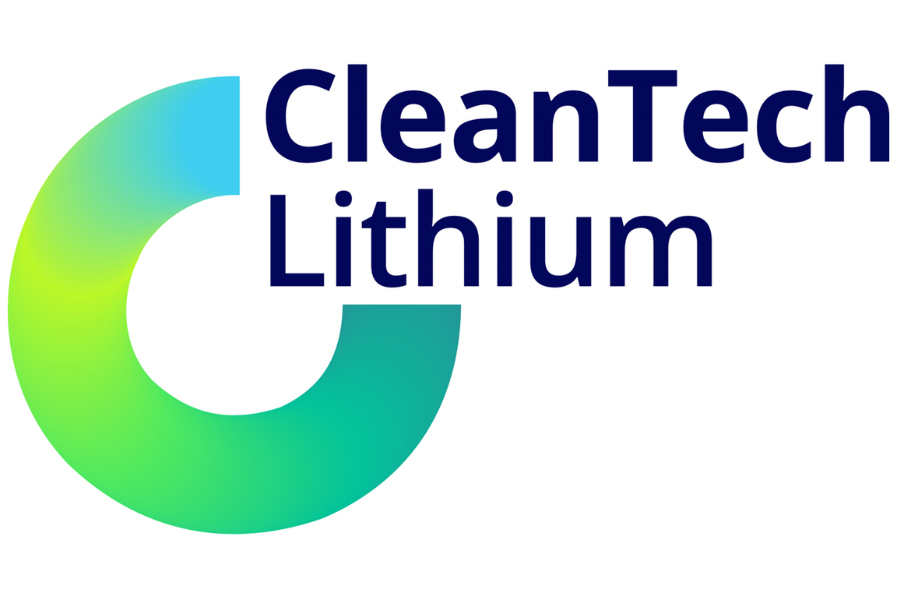
CleanTech Lithium PLC (‘CleanTech Lithium’ or ‘CleanTech’ or the ‘Company’) (AIM: CTL, Frankfurt:T2N), an exploration and development company advancing sustainable lithium projects in Chile, is pleased to announce it has submitted its application (the ‘Application’) for a Special Lithium Operating Contract (‘CEOL’) for Laguna Verde via its Chile-based subsidiary Atacama Salt Lakes SpA (‘ASL’). This submission to the Chilean Government to enter the streamlined process is well ahead of the deadline of 30th January 2026. The award of a CEOL will mean the recipient can commercially produce lithium from the specified project for the duration of the economic life of the project.
Highlights:
Referencing the RNS published on 15th January 2025, the Chilean government set out criteria for applicants to apply for a CEOL at selected salars, including Laguna Verde, under the National Lithium Strategy. These criteria include holding >80% of mining concessions for the proposed polygon area, experience in the mining and lithium extraction industry and audited financial accounts with a minimum accounting equity of USD$30 million held by the applicant or as a consortium.
CTL holds >97% of the relevant mining concessions of the polygon area and so the Company does not expect any applications from third parties for this CEOL. ASL has also formed a consortium with a partner (the ‘Partner’), who requested anonymity, to comfortably satisfy the financial requirements of the Chilean Government. The Partner, who is an experienced minerals company, will in addition to receiving an agreed fee, acquire, for a nominal amount, a minority shareholding in ASL (significantly less than 0.01%) at the time of the award of the Laguna Verde CEOL. CTL will have the exclusive right to require the Partner to transfer that shareholding to another party of CTL’s choosing at any time for the same price as the acquisition. It is intended that this transfer will involve a strategic partner or partners at some point in 2026. In the meantime, as part of the Application, the Partner has also acted as a joint guarantor for the project’s financial obligations for the period that they hold that minority stake in ASL. CleanTech Lithium believes confidently it meets the criteria to enter the CEOL streamlined process, leading to the award of the CEOL, and is expecting to receive feedback on its Application in February 2026.
Ignacio Mehech, Chief Executive Officer of CleanTech Lithium, commented: ‘We believe we are the only applicant eligible to apply for the CEOL at Laguna Verde under the Ministry’s streamlined process. We hold well over the 80% of the mining concessions in the CEOL polygon required by the Ministry, we have formed a consortium with a financially strong partner, and we bring extensive experience in the mining and lithium extraction industry, both in Chile and globally. Our application has been submitted a month before the deadline, and we can expect to the hear back from the Government in February 2026, if not before. This is a pivotal moment in CleanTech Lithium’s pathway to developing a high-quality lithium project at Laguna Verde.
‘By forming a consortium, ASL is supported in its CEOL application by the Partner which will enable CTL to comfortably meet the financial capability criteria set by the Ministry of Mining. We are very grateful for the support of the Partner under commercial arrangements agreeable to both parties.
‘The Company believes that the ongoing legal case relating to certain Laguna Verde licences will have no impact on ASL’s CEOL application given these licences are held in a separate CTL subsidiary which is not part of ASL’s CEOL application. The licences are not required to enable CTL to meet the minimum 80% threshold for mining concessions in the proposed polygon area.
‘Subject to being admitted into direct negotiations within the streamlined process, CTL is preparing to publish the PFS for Laguna Verde. This is being led by international recognised engineering firm Worley and will contain the operational and economic factors to develop a high-quality lithium project at Laguna Verde using low-impact extraction technologies. This will also enable the Company to initiate more meaningful conversations with potential strategic partners in the coming months and we will keep the market informed of progress in due course.’
|
For further information contact: |
|
|
CleanTech Lithium PLC |
|
|
Ignacio Mehech/Gordon Stein/Nick Baxter |
Office: +44 (0) 1534 668 321 Mobile: +44 (0) 7494 630 360 Chile office: +562-32239222 |
|
Beaumont Cornish Limited (Nominated Adviser) Roland Cornish/Asia Szusciak |
+44 (0) 20 7628 3396 |
|
IStar Capital Capital Limited (Joint Broker) Daniel Fox-Davies |
+44 (0) 20 3884 8450 daniel@istar.capital |
|
Canaccord Genuity (Joint Broker) James Asensio |
+44 (0) 20 7523 4680 |
Beaumont Cornish Limited (‘Beaumont Cornish’) is the Company’s Nominated Adviser and is authorised and regulated by the FCA. Beaumont Cornish’s responsibilities as the Company’s Nominated Adviser, including a responsibility to advise and guide the Company on its responsibilities under the AIM Rules for Companies and AIM Rules for Nominated Advisers, are owed solely to the London Stock Exchange. Beaumont Cornish is not acting for and will not be responsible to any other persons for providing protections afforded to customers of Beaumont Cornish nor for advising them in relation to the proposed arrangements described in this announcement or any matter referred to in it.
Notes
CleanTech Lithium (AIM:CTL, Frankfurt:T2N) is an exploration and development company advancing lithium projects in Chile for the clean energy transition. CleanTech Lithium has two key lithium projects in Chile, Laguna Verde and Viento Andino, and exploration stage project in Arenas Blancas (Salar de Atacama), located in the lithium triangle, a leading centre for battery grade lithium production.
CleanTech Lithium is committed to utilising Direct Lithium Extraction (‘DLE’) with reinjection of spent brine resulting in no aquifer depletion. Direct Lithium Extraction is a transformative technology which removes lithium from brine with higher recoveries, short development lead times and no extensive evaporation pond construction. For more information, please visit: www.ctlithium.com
Source
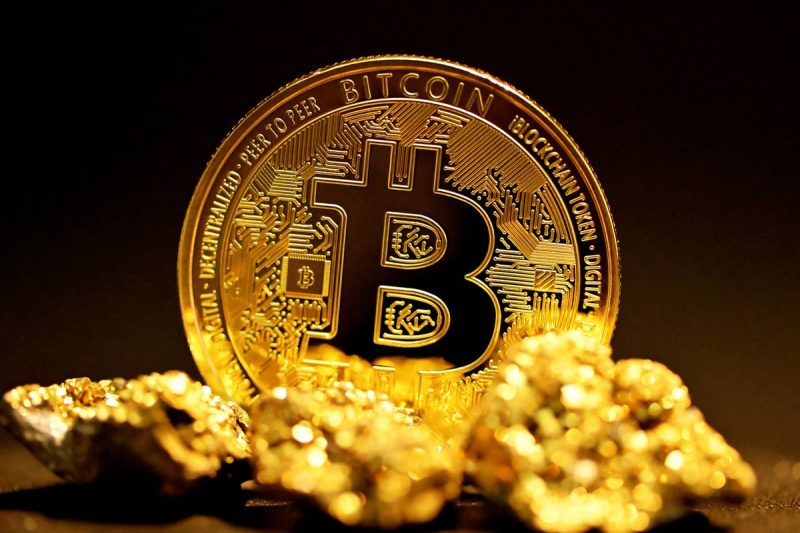

Here’s a quick recap of the crypto landscape for Monday (January 5) as of 9:00 a.m. UTC.
Get the latest insights on Bitcoin, Ether and altcoins, along with a round-up of key cryptocurrency market news.
Bitcoin (BTC) was priced at US$92,433.95, up by 2.8 percent over 24 hours.

Bitcoin price performance, January 6, 2025.
Chart via TradingView
Ether (ETH) was priced at US$3,162.11, up by 1.8 percent over the last 24 hours.
Bitcoin climbed above US$92,000 on Monday (January 5), signaling a potential shift in near-term momentum after a bruising finish to 2025.
Research firm 10X said the move reflects a return to more normalized trading volumes and early signs of renewed institutional positioning at the start of the year.
The firm noted that Bitcoin is holding above key moving averages, with the 21-day line emerging as a critical support level for maintaining upside bias. It added that the shift suggests growing expectations for a push toward the US$100,000 level.
The rebound follows three consecutive monthly declines—an historically rare pattern that has often preceded January recoveries.
Global crypto exchange-traded products attracted US$47.2 billion in net inflows in 2025, falling just short of the prior year’s record despite a noticeable slowdown in Bitcoin demand, according to CoinShares.
Bitcoin-focused products added US$26.9 billion, a sharp drop from 2024 levels, as price weakness dampened inflows and modest interest emerged in short-bitcoin vehicles. The cooling in Bitcoin was offset by a surge into select altcoins, led by Ethereum products, which posted US$12.7 billion in inflows.
Meanwhile, XRP and Solana funds followed closely as each recorded multibillion-dollar inflows and triple-digit percentage growth year over year.
Japan’s finance minister has signaled stronger government backing for integrating digital assets into the country’s stock and commodity exchanges.
Speaking at the Tokyo Stock Exchange, Satsuki Katayama emphasized the role of exchanges in expanding public access to blockchain-based assets and modern investment tools.
She pointed to the US experience with crypto-linked ETFs as a reference point, even as Japan currently lacks domestically listed crypto ETFs.
Katayama described 2026 as a “digital year,” pledging policy support for exchanges adopting advanced trading technologies.
The remarks build on regulatory reforms already underway, including discussions on allowing banks to hold crypto assets and the approval of Japan’s first yen-pegged stablecoin.
Securities Disclosure: I, Meagen Seatter, hold no direct investment interest in any company mentioned in this article.
Securities Disclosure: I, Giann Liguid, hold no direct investment interest in any company mentioned in this article.
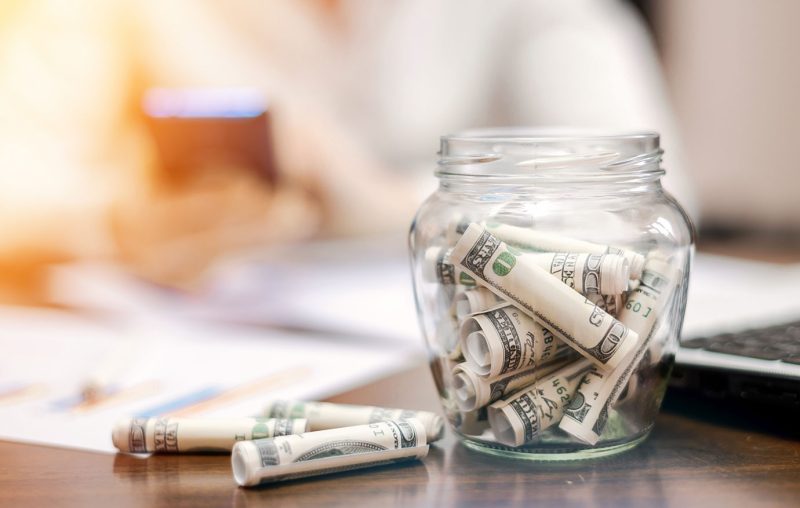
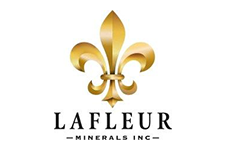
LaFleur Minerals Inc. (CSE: LFLR,OTC:LFLRF) (FSE: 3WK0) (‘LaFleur Minerals’ or the ‘Company’ or ‘Issuer’) is pleased to announce that, further to its news release dated December 29, 2025, it has closed a non-brokered hard dollar private placement for a total of 1,800,000 units of the Company (the ‘Units’) at a price of $0.50 per Unit, for gross proceeds of $900,000 (the ‘Hard Dollar Offering’). Each Unit issued consists of one (1) common share in the capital of the Company (each a ‘Common Share’) and one (1) Common Share purchase warrant (a ‘Warrant’) granting the holder the right to purchase one (1) additional Common Share of the Company (a ‘Warrant Share’) at a price of $0.75 at any time on or before 36 months from the Closing Date. The securities offered under the Hard Dollar Offering will be subject to a statutory hold period in Canada expiring four (4) months and one day from the closing of the Offering, in accordance with applicable Canadian securities laws.
The gross proceeds from the Hard Dollar Offering will be used for the commissioning and restart of gold production operations at the Company’s wholly-owned Beacon Gold Mine and Mill, as well as work at the Company’s Swanson Gold Project in Val d’Or, Québec, and for general working capital purposes.
The Company has paid qualified finders and brokers a cash commission of $63,000, or 7% of the aggregate gross proceeds of the Hard Dollar Offering, and a total of 126,000 broker warrants (the ‘Broker Warrants‘). Each Broker Warrant will entitle the holder to purchase one Common Share at an exercise price equal to the Offering Warrant Price for a period of 24 months following the Closing Date.
TOTAL FINANCING OF $7,800,421.
This milestone is a strategic inflection point for LaFleur as the Company transitions from exploration to near-term gold production and value creation, providing strong financial momentum as the Company advances toward restarting gold production at its wholly-owned and recently updated Beacon Gold Mill and as it accelerates development of its Swanson Gold Project in the heart of Quebec’s prolific Abitibi Gold Belt. With the previously announced (December 31,2025 News Release) closing of its LIFE Offering for an upsized amount and gross proceeds of $4,695,000 and Flow-Through Offering for an oversubscribed amount and gross proceeds of $2,205,421, and the last Hard Dollar $900,000 offering, the Company is well on its way to restart production at its Beacon Gold Mill. The Company’s previously announced Preliminary Economic Assessment (‘PEA’) is on its way to completion this month, which intends to outline a comprehensive, economic study for the sourcing of mineralized material from its nearby Swanson Gold Project and process at its nearby 100% Owned Beacon Gold Mill.
This news release is not an offer to sell or the solicitation of an offer to buy the securities in the United States or in any jurisdiction in which such offer, solicitation or sale would be unlawful prior to qualification or registration under the securities laws of such jurisdiction. The securities referred to in this news release have not been, nor will they be, registered under the United States Securities Act of 1933, as amended (the ‘U.S. Securities Act’), and such securities may not be offered or sold within the United States or to, or for the account or benefit of, U.S. persons absent an exemption from registration under the U.S. Securities Act and applicable U.S. state securities laws. ‘United States’ and ‘U.S. person’ are as defined in Regulation S under the U.S Securities Act.
About LaFleur Minerals Inc.
LaFleur Minerals Inc. (CSE: LFLR,OTC:LFLRF) (FSE: 3WK0) is focused on the development of district-scale gold projects in the Abitibi Gold Belt near Val-d’Or, Québec. Our mission is to advance mining projects with a laser focus on our resource-stage Swanson Gold Deposit and the Beacon Gold Mill, which have significant potential to deliver long-term value. The Swanson Gold Project is approximately 18,304 hectares (183 km2) in size and includes several gold- and critical-metal-rich prospects previously held by Monarch Mining, Abcourt Mines, and Globex Mining. LaFleur has recently consolidated a large land package along a major structural break that hosts the Swanson, Bartec, and Jolin gold deposits and several other showings which make up the Swanson Gold Project. The Swanson Gold Project is easily accessible by road allowing direct access to several nearby gold mills, further enhancing its development potential. Lafleur Mineral’s fully refurbished and permitted Beacon Gold Mill is capable of processing over 750 tonnes per day and is being considered for processing mineralized material at Swanson and for custom milling operations for other nearby gold projects. https://lafleurminerals.com
ON BEHALF OF LaFleur Minerals INC.
Paul Ténière, M.Sc., P.Geo.
Chief Executive Officer
E: info@lafleurminerals.com
LaFleur Minerals Inc.
https://lafleurminerals.com
1500-1055 West Georgia Street
Vancouver, BC V6E 4N7
Neither the Canadian Securities Exchange nor its Regulation Services Provider accepts responsibility for the adequacy or accuracy of this news release.
Cautionary Statement Regarding ‘Forward-Looking’ Information
This news release includes certain statements that may be deemed ‘forward-looking statements’. All statements in this new release, other than statements of historical facts, that address events or developments that the Company expects to occur, are forward-looking statements. Forward-looking statements are statements that are not historical facts and are generally, but not always, identified by the words ‘expects’, ‘plans’, ‘anticipates’, ‘believes’, ‘intends’, ‘estimates’, ‘projects’, ‘potential’ and similar expressions, or that events or conditions ‘will’, ‘would’, ‘may’, ‘could’ or ‘should’ occur. Forward-looking statements in this news release include, without limitation, statements related to the closing of the LIFE Offering and the FT Offering, and the anticipated use of proceeds from the LIFE Offering and the FT Offering. Although the Company believes the expectations expressed in such forward-looking statements are based on reasonable assumptions, such statements are not guarantees of future performance and actual results may differ materially from those in the forward-looking statements. Factors that could cause the actual results to differ materially from those in forward-looking statements include market prices, continued availability of capital and financing, and general economic, market or business conditions. Investors are cautioned that any such statements are not guarantees of future performance and actual results or developments may differ materially from those projected in the forward-looking statements. Forward-looking statements are based on the beliefs, estimates and opinions of the Company’s management on the date the statements are made. Except as required by applicable securities laws, the Company undertakes no obligation to update these forward-looking statements in the event that management’s beliefs, estimates or opinions, or other factors, should change.
THIS NEWS RELEASE IS NOT FOR DISTRIBUTION TO U.S. NEWSWIRE SERVICES FOR DISSEMINATION IN THE UNITED STATES

To view the source version of this press release, please visit https://www.newsfilecorp.com/release/279441

News Provided by Newsfile via QuoteMedia


The Krafty Labs acquisition brings with it a diversified list of blue-chip enterprise customers
TORONTO, ON AND NEW YORK, NY / ACCESS Newswire / January 5, 2026 / Nextech3D.ai (CSE:NTAR,OTC:NEXCF)(OTCQB:NEXCF)(FSE:1SS), an AI-first technology company specializing in AI-powered live event solutions, 3D modeling, and spatial computing, today announced the successful closing of its previously announced acquisition of Krafty Labs, an experiential team-building platform serving large enterprise organizations. The acquisition was completed for $650,000 in cash with the CEO investing $321,917.
With the completion of this transaction, Nextech3D.ai believes it has built one of the industry’s most comprehensive end-to-end AI-powered platforms for live events and enterprise experiential engagement.
Creating a Unified, End-to-End AI-Powered Event Technology Ecosystem
The addition of Krafty Labs meaningfully expands Nextech3D.ai’s AI-powered event technology portfolio, enabling the Company to offer an integrated platform that spans the full AI-driven event lifecycle, including:
AI-powered event registration and ticketing
AI-powered badging and on-site badge printing
AI-powered lead retrieval and exhibitor analytics
AI-powered mobile event applications
AI-powered interactive floor plans and spatial navigation
AI-powered engagement tools, including AI matchmaking
AI-powered enterprise experiential team-building programs
Together, these capabilities position Nextech3D.ai to serve AI-powered event organizers, exhibitors, sponsors, and enterprise customers through a single, unified platform.
Blue-Chip Customer Base, Proven Revenue Platform, and Expanding Experience Library
The Krafty Labs acquisition brings with it a diversified list of blue-chip enterprise customers, significantly expanding Nextech3D.ai’s customer footprint and cross-selling opportunities across its AI-powered live event and 3D model ecosystem.
Krafty Labs currently offers approximately 100 curated experiential events designed for enterprise-scale deployment and operates a revenue-generating AI-enabled experiential engagement platform that produced approximately $1.2 million in revenue during 2025 with a 73% gross margin or $876,000 in gross profits, demonstrating proven market demand and providing Nextech3D.ai with an immediately accretive operating business.
Accelerating Platform Expansion Through Automation
Following the acquisition, Nextech3D.ai expects to significantly accelerate the expansion of Krafty Labs’ experiential offerings, with management anticipating the rollout of approximately 100+ new experiences per quarter, representing a potential 400% expansion of the platform’s experiential catalog in 2026.
This anticipated growth is expected to be driven primarily by the automation of the creator and experience onboarding process, which historically has been a largely manual workflow. Nextech3D.ai plans to leverage its AI capabilities and platform infrastructure to streamline onboarding, standardize quality controls, and reduce time-to-market for new experiences.
Focus on Automation, AI Enhancements, and Custom Enterprise Experiences
Planned enhancements to the Krafty Labs platform will center on:
Automating experience onboarding and deployment
Enhancing AI-driven matching and personalization
Improving scalability and operational efficiency
Delivering custom-branded experiential programs for large corporate accounts
Management believes these enhancements will support higher customer lifetime value, increased subscription adoption, and expanded recurring revenue.
Retention of Key Leadership and Team
Nextech3D.ai has retained the entire Krafty Labs operating team, including the company’s founder, Chief Operating Officer, and Chief Technology Officer, who have joined Nextech3D.ai in senior leadership roles.
Management believes the retention of this experienced team will accelerate integration, innovation, and execution across Nextech3D.ai’s AI-powered live event and experiential engagement platform.
Expanding Recurring Revenue Through AI-Powered Subscription-Based Engagement
Krafty Labs has already begun rolling out a new annual AI-powered subscription model designed to support large enterprise organizations with thousands of employees distributed globally. These subscriptions provide ongoing access to curated experiential engagement and AI-powered team-building programs that extend beyond one-time AI-powered events.
Nextech3D.ai intends to accelerate the rollout of this subscription model by leveraging its enterprise relationships, AI-powered event infrastructure, 3D modeling capabilities and global sales capabilities.
Addressing a Large and Growing Market Opportunity
According to Grand View Research, the global live events market was valued at approximately $1.1 trillion in 2023 and is expected to grow at a compound annual growth rate (CAGR) of over 13% through 2030, driven by increasing demand for digital, hybrid, and AI-powered engagement solutions.
Source: https://www.grandviewresearch.com/industry-analysis/events-industry-market
Management Commentary
Evan Gappelberg, CEO of Nextech3D.ai, commented:
‘With Krafty Labs, we see a clear opportunity to move from a curated experience model to a true global platform. By automating onboarding, we expect to scale from roughly 100 experiences today to a marketplace that can support thousands of creators worldwide – including artisans, facilitators, chefs, wellness instructors, educators, and event professionals. This platform approach allows us to rapidly expand our experiential offering to existing blue chip customers-while maintaining enterprise standards and supporting global, distributed workforces.’
About Nextech3D.ai
Nextech3D.ai is an AI-first technology company specializing in AI-powered live event solutions, 3D modeling, and spatial computing. The Company delivers an integrated suite of AI-driven technologies designed to enhance live, hybrid, and virtual experiences through intelligent engagement, visualization, and data-driven insights.
About Krafty Labs
Krafty Labs is an AI-enabled experiential team-building platform delivering curated engagement programs for large enterprise organizations. Its offerings are designed to support employee connection, collaboration, and culture across distributed and global teams.
Website: www.Nextech3D.ai
Investor Relations: investors@nextechar.com
For further information, please visit: www.Nextech3D.ai.
Investor Relations: investors@nextechar.com
Sign up for Investor News and Info – Click Here
Evan Gappelberg /CEO and Director
866-ARITIZE (274-8493)
Forward-looking Statements The CSE has not reviewed and does not accept responsibility for the adequacy or accuracy of this release. Certain information contained herein may constitute ‘forward-looking information’ under Canadian securities legislation. Generally, forward-looking information can be identified by the use of forward-looking terminology such as, ‘will be’ or variations of such words and phrases or statements that certain actions, events or results ‘will’ occur. Forward-looking statements regarding the completion of the transaction are subject to known and unknown risks, uncertainties and other factors. There can be no assurance that such statements will prove to be accurate, as future events could differ materially from those anticipated in such statements. Accordingly, readers should not place undue reliance on forward-looking statements and forward-looking information. Nextech will not update any forward-looking statements or forward-looking information that are incorporated by reference herein, except as required by applicable securities laws.
SOURCE: Nextech3D.ai Corp
View the original press release on ACCESS Newswire
![]()
News Provided by ACCESS Newswire via QuoteMedia


(TheNewswire)
 |
|||||||||
 |
 |
 |
 |
||||||
GRANDE PRAIRIE, ALBERTA TheNewswire – January 5, 2026 – Angkor Resources Corp. (TSXV: ANK,OTC:ANKOF) (‘ANGKOR’ OR ‘THE COMPANY’) is pleased to announce that it has completed the Definitive Agreement (‘Agreement’) with an arm’s length party (the ‘Purchaser’) to sell its 40% participating interest in the Evesham Macklin oil and gas lands (the ‘Assets’) in Saskatchewan at a sale price of $4,800,000. The sale of the Assets is anticipated to be completed on January 30, 2026 (the ‘Closing Date’).
The Assets were acquired by the Company through its wholly owned-subsidiary EnerCam Exploration Ltd. on December 12, 2023 and the Purchaser provided a loan (the ‘Loan’) to fund the acquisition. The outstanding amount of the Loan is $3,800,000.
The Agreement, which was signed on December 31, 2025, follows the original announcement of the signing of a Letter of Intent, Angkor Resources SIGNS LETTER OF INTENT TO SELL EVESHAM OIL PRODUCTION – Angkor Resources Corp. on December 15, 2025.
Transaction Summary
The terms of the Agreement include:
(a) a $250,000 non-refundable deposit which was paid on December 19, 2025;
(b) a payment of $375,000 payable on the Closing Date of January 30, 2026;
(c) the balance of the Loan will be applied to the purchase price on the Closing Date;
(d) a final payment of $375,000 is payable on March 1, 2026; and
(e) all profit entitlements and operating and capital commitments under the Assets after
October 1, 2025 shall accrue to the Purchaser.
Conditions to Closing
The transaction is subject to shareholder approval which will be confirmed at the Annual General Meeting of the Company on January 29, 2026 and is also subject to receipt of all applicable regulatory approval of the stock exchange.
No finder’s fees were paid on the transaction.
ABOUT Angkor Resources CORPORATION
Angkor Resources Corp. is a public company, listed on the TSX-Venture Exchange (ANK) and on OTCQB (ANKOF), and is a leading resource optimizer in Cambodia working towards mineral and energy solutions across Canada and Cambodia.
The Company’s mineral subsidiary, Angkor Gold Corp. in Cambodia holds two mineral exploration licenses in Cambodia with multiple prospects in copper and gold. Both licenses are in their first two-year renewal term.
Its Cambodian energy subsidiary, EnerCam Resources, was granted an onshore oil and gas license of 7300 square kilometres in the southwest quadrant of Cambodia called Block VIII. The company then removed all parks and protected areas and added 220 square kilometres, making the license area just over 4095 square kilometres. EnerCam is actively advancing oil and gas exploration activities onshore to meet its mission to prove Cambodia as an oil and gas producing Nation.
Since 2022, Angkor’s Canadian subsidiary, EnerCam Exploration Ltd., has been involved in oil and gas production in Saskatchewan, Canada with measures of gas capture to reduce emissions with carbon capture activities. Those activities were a long-term commitment to Environmental and Social projects and cleaner energy solutions across jurisdictions.
CONTACT: Delayne Weeks – CEO
Email:- info@angkorresources.com Website: angkorresources.com Telephone: +1 (780) 831-8722
Please follow @AngkorResources on , , , Instagram and .
TSX-V under ANK
OTCQB under ANKOF
Neither TSX Venture Exchange nor its Regulation Services Provider (as that term is defined in the policies of the TSX Venture Exchange) accepts responsibility for the adequacy or accuracy of this release.
_____________________________________
Certain information set forth in this news release may contain forward-looking statements that involve substantial known and unknown risks and uncertainties which are beyond the Company’s control, including without limitation, anticipated closing of the transaction, satisfaction of conditions, regulatory and shareholder approvals and expected payments, the potential for gold and/or other minerals at any of the Company’s properties, the prospective nature of any claims comprising the Company’s property interests, the impact of general economic conditions, industry conditions, dependence upon regulatory approvals, uncertainty of sample results, timing and results of future exploration, and the availability of financing.
Readers are cautioned that the assumptions used in the preparation of such information, although considered reasonable at the time of preparation, may prove to be imprecise and, as such, undue reliance should not be placed on forward-looking statements.
Copyright (c) 2026 TheNewswire – All rights reserved.
News Provided by TheNewsWire via QuoteMedia